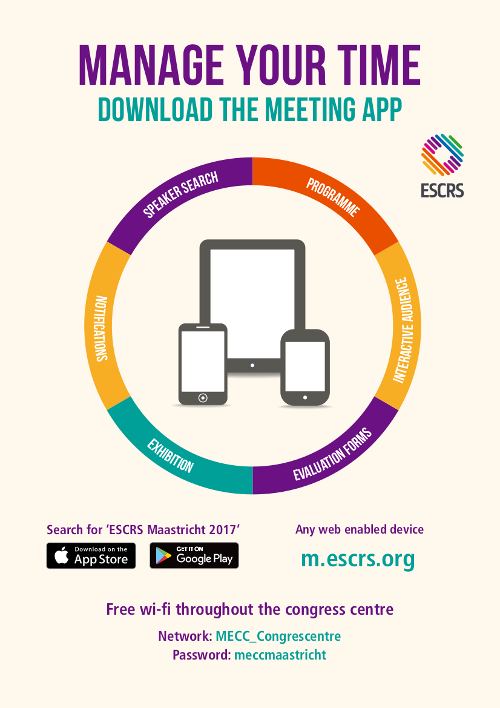Mapping mechanical stress in the ectatic cornea
(results will display both Free Papers & Poster)
Session Details
Session Title: Cornea
Session Date/Time: Friday 10/02/2017 | 08:30-10:00
Paper Time: 09:00
Venue: Brussels Room 0.4
First Author: H.Ginis GREECE
Co Author(s): P. Koutsogianannakopoulou P. Zafirakis C. Katsoulos G. Livir-Rallatos
Abstract Details
Purpose:
To develop a method for the analysis of corneal topography data in combination with intraocular pressure in order to derive the distribution of mechanical stresses on the cornea. Moreover, to evaluate the distribution of corneal stress in a series of eyes with keratoconus.
Setting:
Athens Eye Hospital, Athens Greece
Methods:
The theory of thin wall pressure vessels was adapted for the cornea. For each eye analysed, corneal elevation and pachymetry data were obtained using the Pentacam Scheimpflug camera (Oculus, DE). Intraocular pressure was measured with the Pulsair intelliPuff (Keeler, UK) tonometer. Tangential and circumferential stress was calculated using a purposely developed MATLAB (The Mathworks, Inc, Natick, MA USA) script. For the purpose of the present study, data were recovered retrospectively from the database of Athens eye Hospital.
Results:
Corneal Stress maps in keratoconic eyes show a high variability in comparison to control eyes. Calculated corneal stress ranges from 10 to 45 KPascal. Interestingly, maximum stress within maps is typically at the base and not at the apex of the cone. A series of cases with stress maps and the corresponding progression is presented.
Conclusions:
A simple method to analyse the mechanical stress of the cornea was developed. The method reveals the areas of the cornea that are under significant tensile stress and may prove useful in the analysis of the topographic progression of keratoconus.
Financial Disclosure:
None



